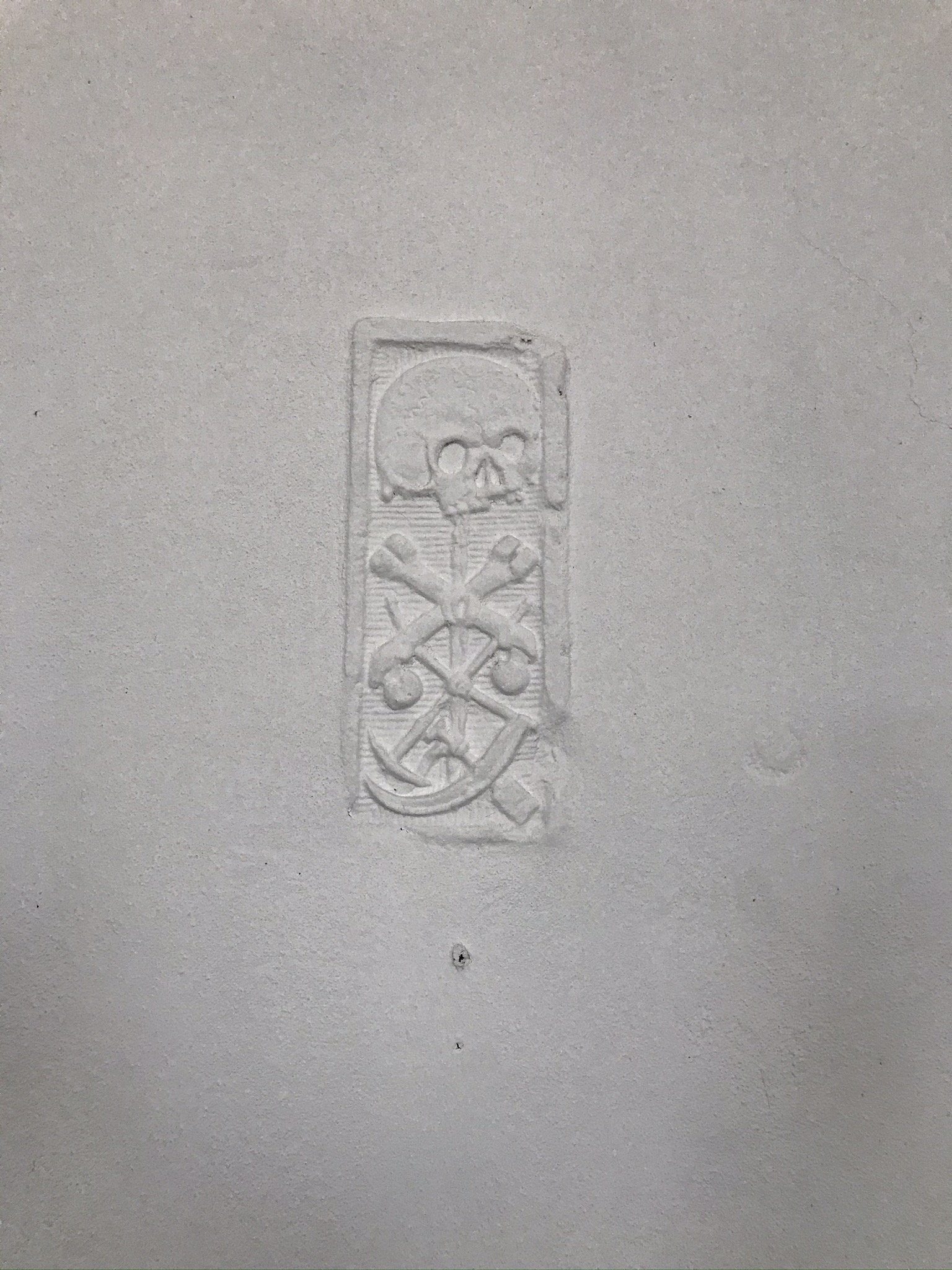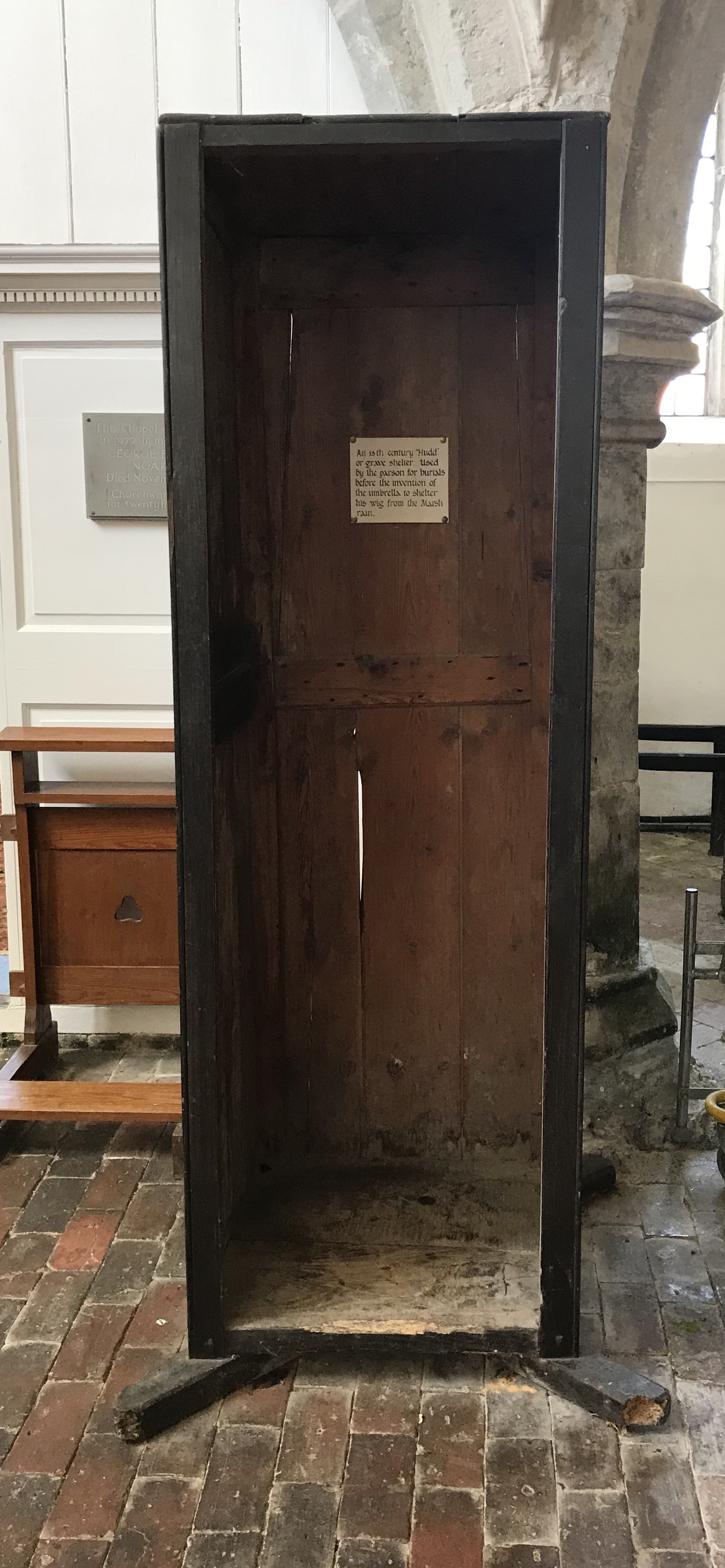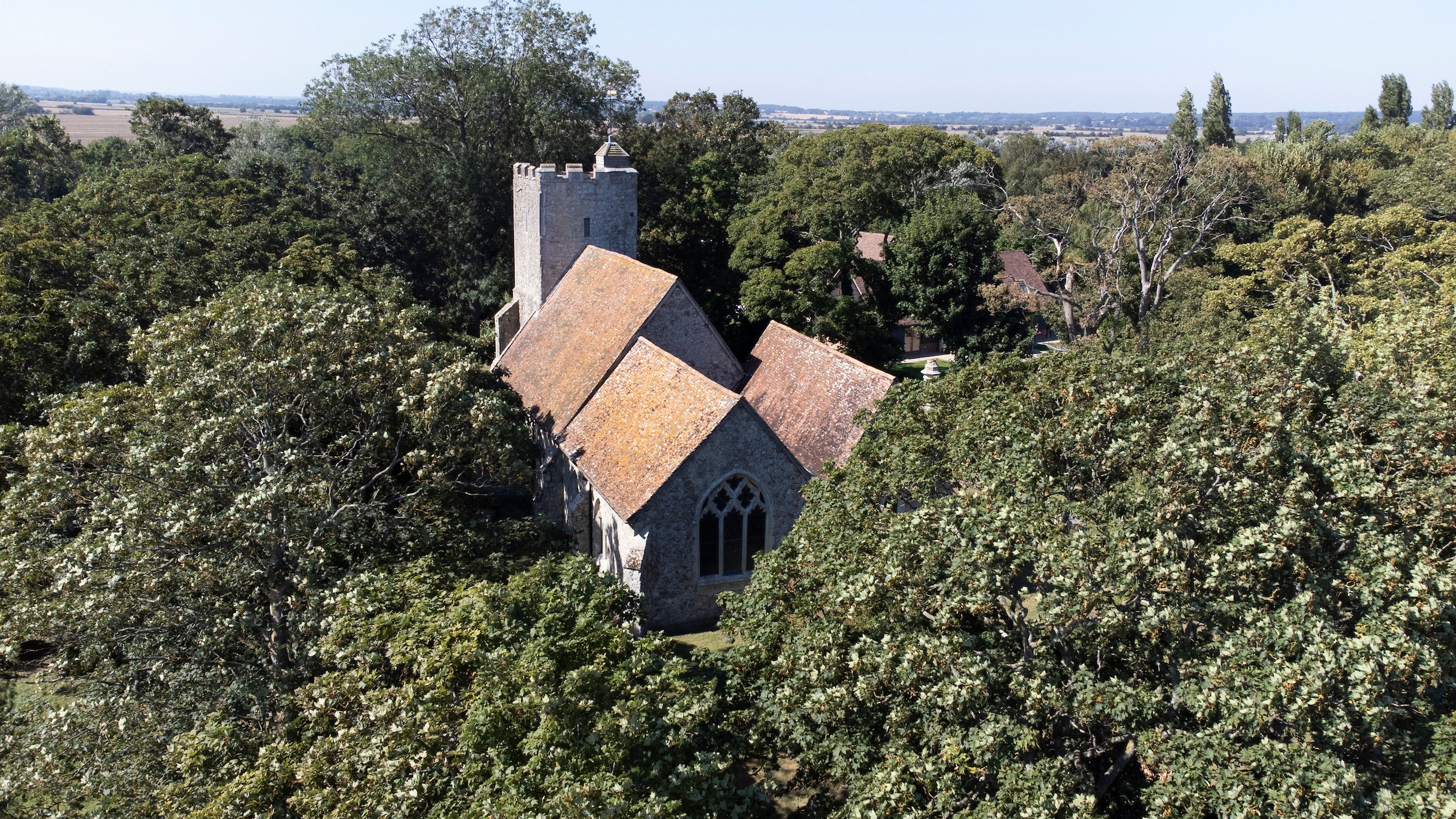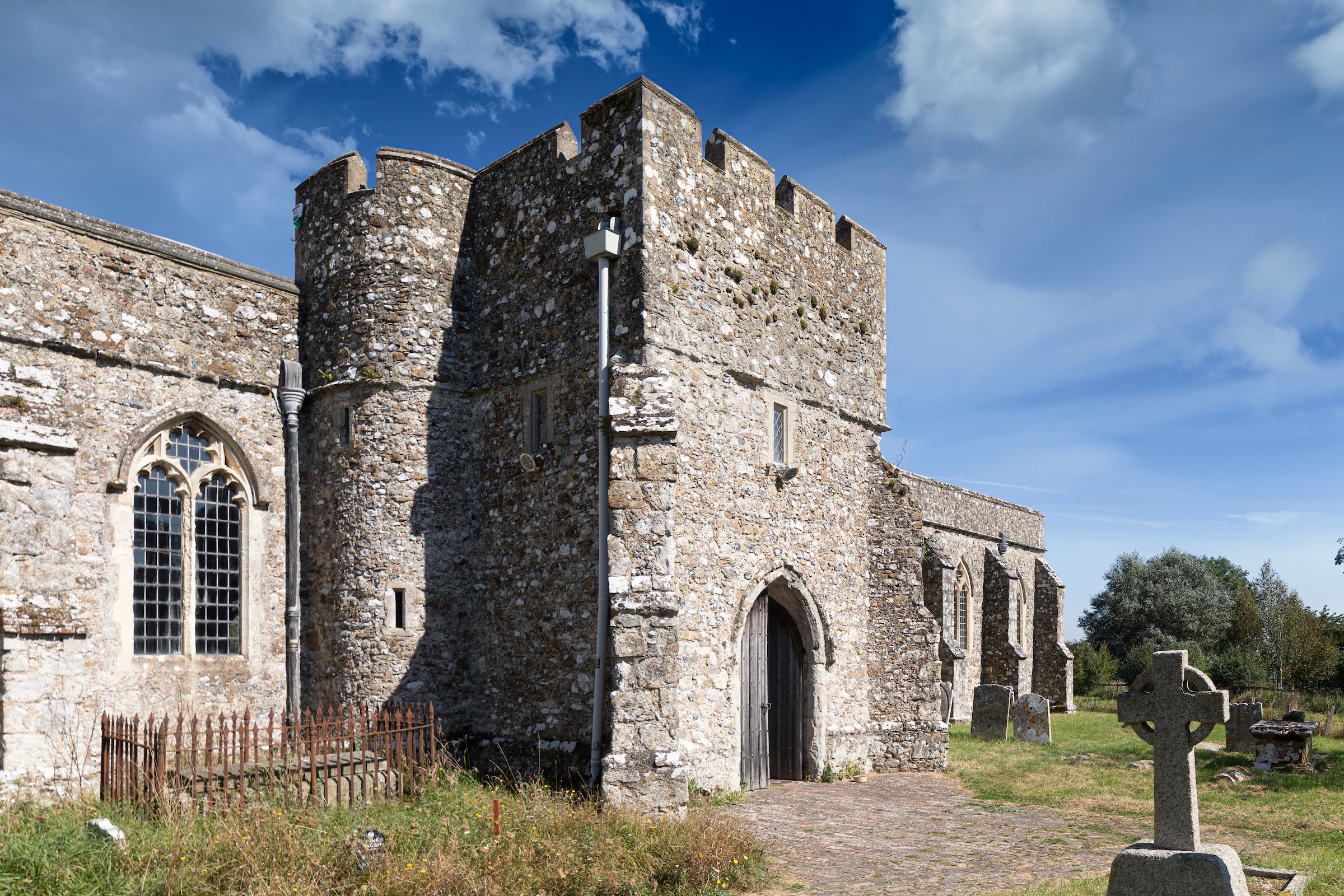
FUN FACTS, FOLKLORE & FEATURES

The Fagge Monument at Brenzett was the inspiration for E. Nesbit's ghost story "Man-Size in Marble".

A medieval ship mural at Snargate was uncovered in 1964. According to folklore, this mean smuggled goods could be stored here safely.

A local myth about the octagonal belltower at Brookland: It looked down and saw a beautiful bride marrying such an unpleasant groom that it jumped off the roof in shock!

The land around Fairfield would often flood in winter. For access, parishioners would have used a boat or a horse "with great danger up to the middle girths".

At Burmarsh, the original cracked tenor bell lies on the floor, dating to around 1375.

The font at Dymchurch is rich in symbolism - circles for the heavens, squares for the earth and an octagon shape for the seven ages of man and life hereafter.

Author Russell Thorndike lived at Dymchurch - his fictional smuggler character Dr Syn was Vicar of Dymchurch.

A magnificent stone spire was added to the tower at New Romney in around 1220. It was pulled down in the 19th Century.

The brick walls at East Guldeford are 3ft thick, supported by huge buttresses. The outside was once plastered.

The bottom "stable doors" at Brookland once had spikes to stop horses from entering during services!

The huge tower at Ivychurch originally stood separately to the church and was joined at a later date.

When the steeple at Brenzett was renewed in 1902, the skeleton of a man was found buried against one of the timbers in an upright position.

Inside the short bell cote at East Guldeford once hung a bell from Playden Church. It was moved to Watchbell Street in Rye to commemorate the millennium.

Brookland has the only complete set of Tithe Weights & Scales in any Kentish church.

The Tower at New Romney was built in stages and shows round Norman arches and later pointed Early Gothic arches.

Lydd has one of the tallest church towers in the country at 40 metres (132 feet). In Spring, nesting herons and egrets can be seen in trees nearby.

The porch at Ivychurch was the site of the earliest school in the district, where the priest was schoolmaster.

Brookland has a rare medieval wall painting showing the murder of Thomas Becket - uncovered during repairs in 1964.

A tiny barred window in the wall at New Romney may have been a window into an anchor hold - a tiny cell where a devout Christian would have been walled up for life.

Records show that a large seizure of smuggled tobacco was made in the belfry at Snargate. A cask of whisky was also recovered from beneath the vestry table.

Lydd has unusual double doors like a cathedral.

At Lydd, the remains of an Anglo-Roman basilica are built into the walls - the oldest masonry on the marsh.

The font at Brookland is older than the church itself and shows the "pagan" signs of the Zodiac above the Labours Of The Months.

The doorway at New Romney lies several feet below ground level - in 1287, a Great Storm washed in so much sand and shingle that the land here was raised.

The tower at Newchurch is crooked. It began to lean after the first stages were added, so it was left to settle. The belfry was then added in an upright position.

The church at Fairfield stands on Walland Marsh, which was the last part of the marsh to be drained. It was built to serve local farms.

On the wall at Snave is a skull & crossbones with the scythe of the Grim Reaper - perhaps to remind the congregation of the inevitability of death.

The origins of a beautiful painted panel at St Mary in the Marsh is a mystery - it is thought to be Italian or Flemish.

Rumour has it that the church at Ivychurch was connected to the Bell Inn by smugglers' tunnels. No evidence of this has been found.

Fairfield church has featured in films based on Charles Dickens' Great Expectations featuring David Suchet, Ray Winstone, Helena Bonham Carter & Ralph Fiennes.

Lydd was heavily bomb damaged in World War Two. A painting showing the damage was sent to Winston Churchill with a plea for help to rebuild.

A hudd was used to keep the priest dry during graveside services - found at Brookland and Ivychurch.

The church at New Romney would have once stood next to a thriving port. At the peak of its prosperity, New Romney had 5 churches.

The large Lady Chapel at Snave was once used as a school room with a large stove and chimney.

The church at Newchurch is associated with smuggling. The nearby Black Bull Inn was a favourite smugglers' haunt - its pink "strawberry lamp" was lit to warn smugglers that Riding Officers were about.

At Ivychurch, the elderly and inform would have sat on a low stone wall seat during mass. The expression "let the weakest go to the wall" came from this time.

The interior of Old Romney was painted pink for Disney's technicolour film version of "Dr Syn: The Scarecrow of Romney Marsh".

St Mary in the Marsh and Dymchurch have medieval scratch dials - early sun dials used by priests to advertise the time of the next service.

During restoration work at Burmarsh around 1876, services were held in the Shepherd & Crook Inn next door.

Artist John Piper has painted all of the marsh churches. The white panelling and black details of Fairfield were used as inspiration when Piper designed the prayer room of Nuffield College Oxford.

A large chest at Brookland is rumoured to have been salvaged from a Spanish galleon after the defeat of the Armada in 1588.

Local sheep farmer James Chittenden is buried at St Mary in the Marsh. The bloodline of New Zealand's Romney Sheep can be traced to his flock.

The Stuppenye Tomb at New Romney was used for the ancient meetings and elections of mayors and jurats.

The original octagonal font at Snave now lies on the floor. It was rescued in 1929 from use as a rainwater butt.

The 15th font at Newchurch shows the white rose of York, the red rose of Lancaster and the Tudor rose. It probably dates from the period of peace under Tudor King Henry VII.

Snave is known locally as the "daffodil church" for its impressive Spring time display.

The North chapel at Lydd has the tomb of a crusader, Sir Walter de Menyl.

A Norman stone face can be seen over the door at Burmarsh.

The font at Dymchurch has the remains of staples for a medieval locking lid - used to prevent "witches" from stealing holy water.

In 1912, Fairfield church was in danger of collapse. It was taken down and faithfully rebuilt using original materials, on the original footprint.

Lydd is the longest parish church in Kent at over 60 metres (199 feet).

Artist and film-maker Derek Jarman is buried in the churchyard at Old Romney. He lived at Dungeness in Prospect Cottage.

Graffiti depicting a ship can be found carved into a pew at Brookland.

The beacon turret on the tower at Snave potentially allowed for fires to be lit in case of invasion, or to guide locals.














